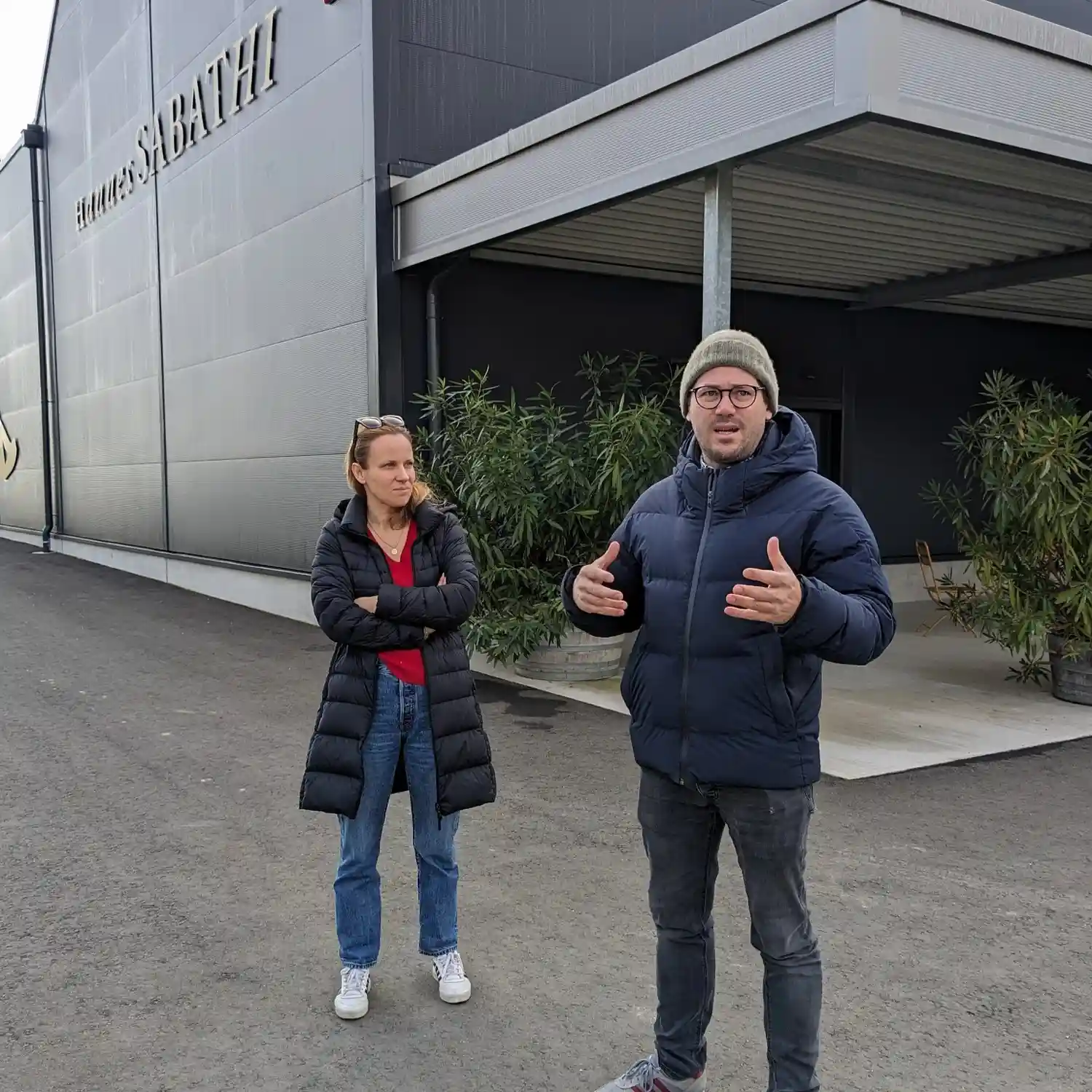
"Our intention is not to do fruity wines," said Karin Sabathi. Looking back at our notes, we could not find any mention of grapefruit, apple, or guava. Not a single scribble.
Location: Gamlitz, Südsteiermark, Austria
Hectares: 65
Farming: Certified sustainable
People: Hannes and Karin Sabathi
Website: https://www.hannessabathi.at/
"Our intention is not to do fruity wines," said Karin Sabathi. Looking back at our notes, we could not find any mention of grapefruit, apple, or guava. Not a single scribble.
Instead, my notes describe a scene reminiscent of camping or hiking in the woods. “Smoky,” I wrote of the Gamlitzer Grauburgunder, “nettles,” of the Kranachberg Sauvignon Blanc, “flint stone, toast, and chamomile,” of the Jägerberg Chardonnay. If the idea of varietal wine is to get the maximum expression of the varietal, then Hannes Sabathi shows us that the character of a wine grape spans an enormous range. If New World Sauvignon Blanc is known for its fruitiness, Sabathi’s interpretation lies on the opposite end of the spectrum.
Hannes Sabathi took over his family’s vineyards in 1999 at 18. I have the impression that Hannes feels most at home in the vineyards and works at harvesting the healthiest possible fruit so he can minimize his activities in the cellar. The couple owns 65 hectares, an extensive wine estate by Südsteiermark standards, and farms without chemicals. Organic farming has become much more common among quality wine producers. Still, it’s worth emphasizing here since Südsteiermark deals with everything from frequent hail and frost to excessive rain and humidity. This uniquely Mediterranean meets Alpine climate, coupled with calcareous soils and producers willing to push wines to their reductive limits, is why Südsteiermark is the most exciting Sauvignon Blanc region in the world. I am sure of this even after working a harvest in Sancerre, and we haven’t even gotten to Südsteiermark’s breathtaking beauty and delicious cuisine. What a place.
Back to Hannes Sabathi’s non-fruit wines, he clearly works in a reductive style. As with many producers who work this way, he believes in healthy fruit, spontaneous fermentation (pied de cuve), keeping solids in suspension, and extended lees aging. Vinification and aging take place in stainless steel tanks or large oak casks, depending on the wine. He’s a member of the STK, an association of twelve wineries representing the best of Styrian wine. Puligny-like Chardonnay and Grauburgunder come from the Ried Jägerberg 1STK (this symbol indicates a vineyard rated as premier cru by the STK group). His Sauvignon Blanc and Weißburgunder come from the pictured Ried Kranachberg GSTK (this symbol indicates a vineyard rated as grand cru by the STK group). STK stands for Steirische Terroir & Klassik Weingüter. If you’re new to Styrian Sauvignon Blanc or Styrian wines generally, it’s a good tip to look for the STK symbol on the capsule. You will be hard-pressed not to drink something outstanding.
Tech sheets/Shelf talkers/Ratings:
Weingut Hannes Sabathi Gelber Muskateller Südsteiermark 2021
Weingut Hannes Sabathi Gelber Sauvignon Blanc Südsteiermark 2022
Weingut Hannes Sabathi Gelber Sauvignon Blanc Gamlitz Südsteiermark 2021
Weingut Hannes Sabathi Gelber Chardonnay Ried Jägerberg 1STK Südsteiermark 2020
Weingut Hannes Sabathi Gelber Sauvignon Blanc Ried Kranchberg GSTK Südsteiermark 2019
